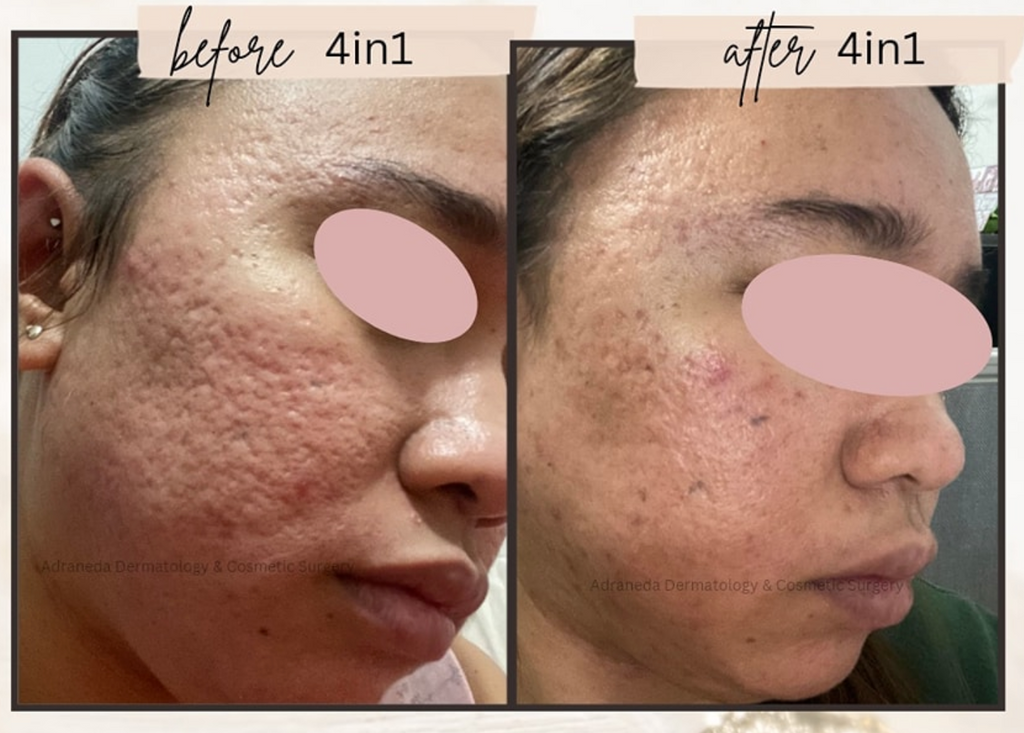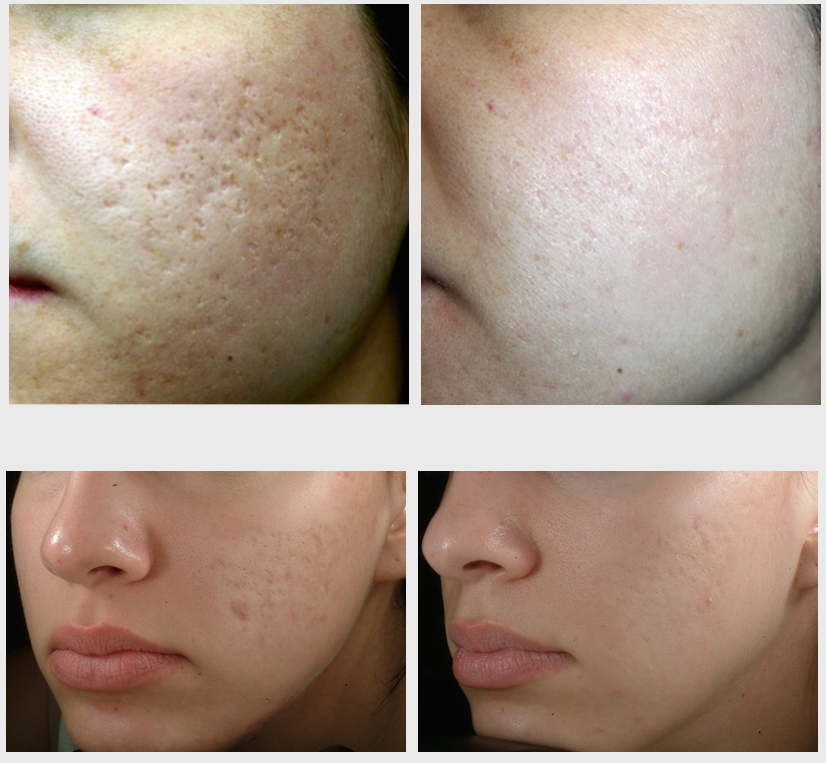Discovering Skin Conditions: Dealing With and recognizing Acne Scars for Healthier Skin
Acne scars stand for a substantial concern for people looking for to keep healthy skin, as they can impact both look and self-worth. Understanding the various types of marks, from atrophic to hypertrophic, is essential for figuring out ideal treatment options.
Understanding Acne Marks

The body's natural healing process can cause either atrophic scars, which show up as clinical depressions in the skin, or hypertrophic scars, which are increased and result from overproduction of collagen. In addition, the psychological toll of acne scars must not be underestimated; several individuals report sensations of shame, anxiousness, and lowered self-esteem. This psychological concern can affect social interactions and total quality of life.
Dealing with acne marks requires a comprehensive understanding of their development and impact. Recognition of the capacity for long-lasting effects connected with without treatment marks can inspire people to seek ideal treatments. Early treatment and reliable monitoring methods can significantly boost skin appearance and improve psychological durability, emphasizing the importance of comprehending the complexities surrounding acne marks.
Kinds Of Acne Marks
Acne marks can be classified right into distinct kinds, each exhibiting one-of-a-kind attributes and needing specific treatment methods. acne and acne scars treatment. The key kinds of acne scars consist of atrophic, hypertrophic, and keloid marks

Hypertrophic scars, in comparison, are increased above the skin level and are the outcome of excessive collagen manufacturing during the recovery process. They generally continue to be within the boundaries of the original acne lesion. Keloid marks are similar however expand beyond the original injury site, creating bigger, raised areas that can be excruciating or itchy.
Comprehending these kinds of scars is necessary for choosing ideal treatment choices. Different marks might respond better to details therapies, such as laser therapies, fillers, or surgical treatments, stressing the relevance of a tailored strategy to acne mark monitoring.
Determining Your Marks
Acne scars normally fall right into 2 classifications: hypertrophic and atrophic scars. These can even more be categorized right into ice-pick marks, boxcar marks, and rolling scars, each exhibiting distinctive characteristics and needing various approaches for evaluation.
Hypertrophic marks, on the various other hand, are raised and happen due to too much collagen manufacturing throughout the healing process. Recognizing the particular functions of your marks-- such as deepness, width, and appearance-- is vital for proper recognition (acne scars). In addition, take into consideration the distribution of scars throughout your skin, as this can show the severity and duration of the acne condition
Involving with a dermatologist can give important insights right into the nature of your marks, helping in the differentiation in between numerous types. A thorough understanding of your marks will ultimately result in a more tailored and efficient treatment strategy, guaranteeing a clearer and much healthier skin.
Treatment Choices Offered
Identifying the specific type of acne scars present on your skin prepares for exploring effective treatment options. Common kinds of acne scars include atrophic (clinically depressed), hypertrophic (increased), and post-inflammatory erythema.
For atrophic marks, options such as chemical peels, microneedling, and laser resurfacing are widely used. Chemical peels off utilize acids to eliminate the external layer of skin, advertising new cell growth.
Hypertrophic scars can be treated with corticosteroid injections to flatten the scar or laser therapy to reduce soreness and improve appearance. Silicone gel sheets and stress dressings might additionally assist in managing increased scars.
Furthermore, facial fillers can temporarily fill out clinical depressions from atrophic scars, while surgical excision may be appropriate for severe situations. Each treatment choice has its considerations and advantages, making it important to speak with a dermatologist. They can give tailored suggestions based on the kind go to these guys and severity of your scars, in addition to your skin kind and general wellness.
Tips for Prevention
Reliable avoidance techniques can significantly reduce the probability of creating acne scars. The first action is to maintain a constant skin care routine that consists of mild cleansing, peeling, and hydrating. Making use of non-comedogenic products assists avoid blocked pores, which can worsen acne. In addition, incorporating topical therapies consisting of salicylic acid or benzoyl peroxide can effectively decrease and take care of outbreaks inflammation.
Avoiding need to choose or stand out acne sores is crucial, as this can lead to much deeper skin damage and boost the threat of scarring. Rather, take into consideration utilizing a chilly compress or non-prescription treatments to minimize swelling and soreness.
Sun security is one more essential aspect of avoidance; ultraviolet (UV) rays can dim scars and impede the recovery process. Applying a broad-spectrum sun block with at least SPF 30 daily can protect the skin and promote this link even recovery.
Last but not least, preserving a well balanced diet abundant in antioxidants, minerals, and vitamins supports skin health and wellness and recovery. Remaining moisturized and handling tension levels can also play a considerable role in lowering acne flare-ups. By executing these methods, individuals can significantly decrease their opportunities of creating acne scars.
Conclusion
Finally, understanding and identifying acne marks is crucial for efficient treatment and achieving healthier skin. Different kinds of acne scars, consisting of hypertrophic and atrophic scars, require certain interventions tailored to private requirements. Treatment choices variety from chemical peels and microneedling to corticosteroid injections, stressing the relevance of speaking with a skin doctor. Furthermore, taking on a mild skincare routine and securing the skin from UV exposure can substantially add to the avoidance of additional scarring and overall skin wellness.
The body's natural healing process can result in either atrophic scars, which appear as depressions in the skin, or hypertrophic marks, which are increased and result from overflow of collagen. They are more split into three subtypes: ice pick scars, boxcar marks, and rolling scars. Acne marks usually drop into 2 categories: hypertrophic and atrophic marks. These can additionally be identified into ice-pick marks, boxcar scars, and rolling scars, each displaying distinct qualities and needing various methods for analysis.
Various types of acne marks, including hypertrophic and atrophic scars, require certain treatments customized to specific resource requirements.
Comments on “Targeted Acne Scars Treatment: Attain Smooth, Even Complexion”